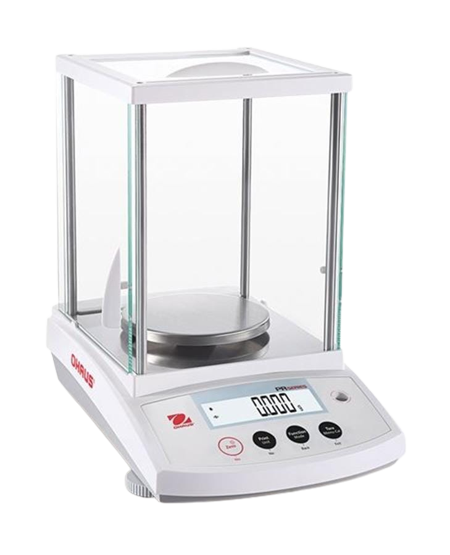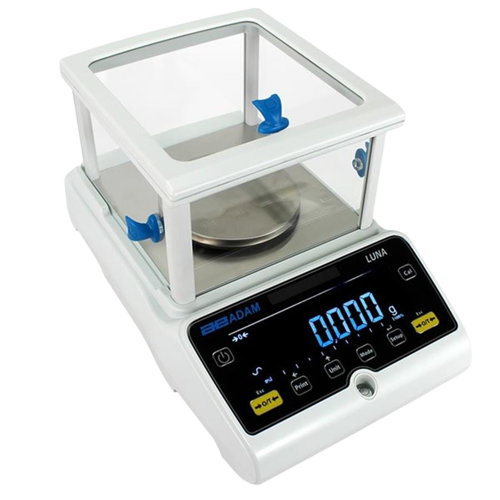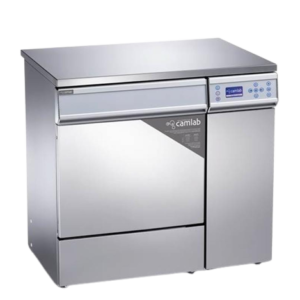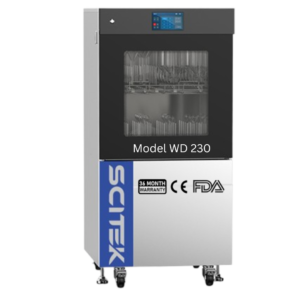Analytical Balance: An analytical balance, also known as a precision balance, is a highly sensitive laboratory instrument used to measure the mass of substances with a high degree of accuracy and precision. It is commonly used in scientific research, quality control, and analytical chemistry applications where precise measurements are required.
Key Features:
- High Precision: Analytical balances are designed to provide accurate measurements to the nearest decimal place (typically up to four decimal places, e.g., 0.0001 g). These balances are capable of weighing small quantities of substances, often ranging from milligrams to a few grams.
- Enclosed Chamber: Analytical balances are enclosed in a glass or plastic chamber with doors or sliding panels. This enclosure protects the weighing pan from air drafts and reduces the influence of environmental factors, such as air currents, humidity, and temperature changes, which can affect the measurement accuracy.
- Draft Shields: Analytical balances are equipped with draft shields, which are transparent structures surrounding the weighing pan. The draft shield minimizes the impact of air movements and vibrations on the weighing process, ensuring more precise measurements.
- Calibration: Regular calibration is crucial to maintain the accuracy of an analytical balance. Calibration involves comparing the balance’s readings to known reference weights. Many analytical balances have built-in calibration features or can be externally calibrated using certified weights.
- Anti-Static Measures: Static electricity can interfere with weighing accuracy, particularly when working with small quantities of powders or substances with high static charges. Analytical balances often include anti-static measures like ionizers or anti-static coatings to minimize these effects.
- Weighing Units and Modes: Analytical balances typically support various weighing units such as grams, milligrams, ounces, carats, etc. They may also offer different weighing modes, including taring (zeroing the balance with a container), counting (for counting small parts), percent weighing, and formulation (mixing specific quantities).
- User Interface: Analytical balances often feature a digital display that shows the weight readings. Some models have touchscreen interfaces or integrated software for data logging, statistical analysis, and connectivity options (e.g., USB, RS-232, Ethernet) to transfer data to external devices or software.
- Handling Precautions: Analytical balances are delicate instruments and require careful handling. Users should avoid placing objects directly on the weighing pan, use appropriate containers or weighing boats, and handle substances with clean tweezers or gloves to prevent contamination.
It’s important to note that analytical balances should be used in a controlled environment, away from sources of vibration, air drafts, and temperature fluctuations to obtain accurate and reliable measurements.







Reviews
There are no reviews yet.